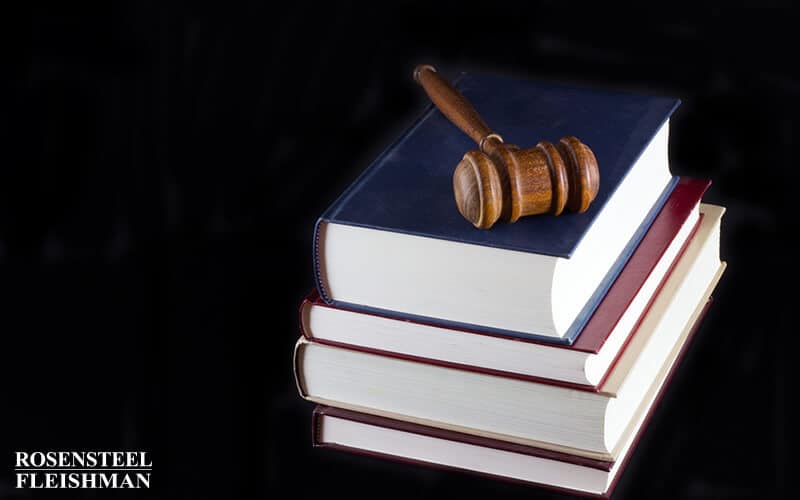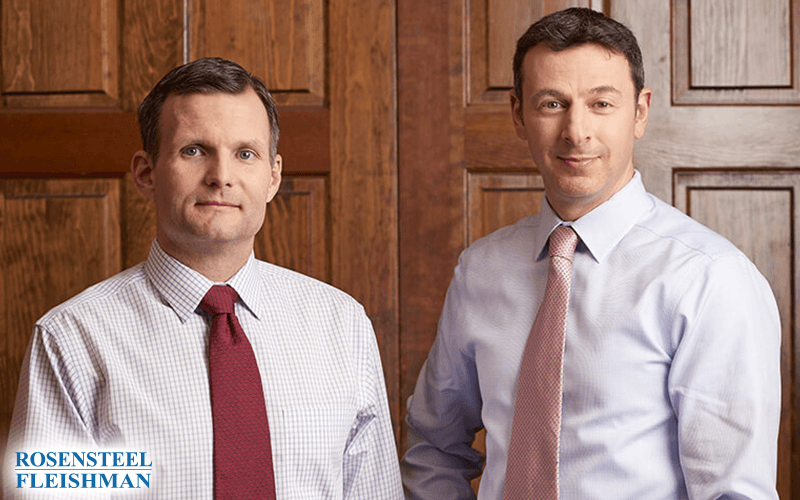While drunk driving accidents have been on the decline in the past few years, drunk driving is still a major problem in the United States and a leading cause of car accidents. The most recent statistics released by the National Highway Traffic Safety Administration show that approximately 28 people die in car accidents every day […]

Supreme Court Hears Oral Argument in Rodriguez
Yesterday, the U.S. Supreme Court heard oral arguments in Rodriguez v. United States, the case from the 8th Circuit that involved the issue of whether a police officer could cause a de minimis delay for a dog sniff in an already completed traffic stop. The defendant was stopped by the officer and issued a warning for veering off the shoulder of the road. After issuing the warning, the officer delayed the defendant for 7 or 8 minutes in order to conduct a dog sniff. (The dog was already on the scene, but the officer waited for the arrival of a second officer because he was concerned for his safety.)
The arguments began with an acknowledgment from the defendant’s attorney that if the traffic stop had not been completed, meaning the warning had not yet been issued, the officer would definitely have been able to conduct a dog sniff. In the 2005 case Illinois v. Caballes, the Court held that a dog sniff conducted during a lawful traffic stop is constitutional and does not “implicate legitimate privacy interests.”
The issue in the defendant’s petition to the Court was stated fairly clearly:
This Court has held that, during an otherwise lawful traffic stop, asking a driver to exit a vehicle, conducting a drug sniff with a trained canine, or asking a few off-topic questions are “de minimis” intrusions on personal liberty that do not require reasonable suspicion of criminal activity in order to comport with the Fourth Amendment. This case poses the question of whether the same rule applies after the conclusion of the traffic stop, so that an officer may extend the already-completed stop for a canine sniff without reasonable suspicion or other lawful justification.
However, the discussion between the defendant’s attorney and the justices became quickly muddled, and the defendant’s attorney seemed to have a hard time satisfying the justices’ questions. The defendant’s attorney initially tried to stick to the formal rule that once the warning or ticket is handed over, the traffic stop is complete and the person stopped is free to leave unless there is reasonable suspicion to further detain him. But the justices argued that such a formal rule would only result in police officers delaying the handing over the warning or ticket until the dog sniff was conducted, which would accomplish nothing. People would gain no additional protection from the Fourth Amendment.
Justice Scalia was particularly incredulous that the defendant’s attorney would argue that a dog sniff before a ticket was issued was permitted while a dog sniff two minutes after a ticket was issued was not. To prove his point, he gave the ridiculous example of an officer who had written out a ticket but held onto it for 45 minutes to wait for a dog to arrive at the scene to conduct a dog sniff. Faced with this example, the defendant’s attorney changed his definition of the formal test so that a traffic stop is complete when the initial mission of the stop has been accomplished, not the handing over of the ticket. At this point, the person stopped is free to leave unless there is reasonable suspicion to further detain him.
The justices then engaged the defendant’s attorney in determining what is a permissible mission of a traffic stop. The defendant’s attorney admitted that it was permissible to look at the driver’s license and the vehicle registration during a traffic stop because these have been adopted as things you can do during a traffic stop.
Justice Sotomayor then pressed the defendant’s attorney to draw a line as to how long citizens may be kept on the side of the road. Rather than giving a time limit, the defendant’s attorney argued that a person pulled over for a broken taillight should be allowed to leave after a records check - checking the driver’s license and the car’s registration. The justices then asked how checking the car’s registration is different than conducting a dog sniff of the car.
Chief Justice Roberts presented the hypothetical of an officer who stopped a car and found that the driver had a criminal record when he ran the driver’s license. The defendant’s attorney acknowledged that in this case, the officer could wait - even 25 minutes - for backup to arrive before returning to the stopped car out of concern for his safety. And if the backup car that arrived included a canine unit, the dog could sniff the car while the officer completed the traffic offense.
The government then began its arguments by advocating for a reasonableness test for dog sniffs, rather than a bright-line rule. The justices quickly jumped in, asking the government to define what is de minimis. Instead of responding with a certain amount of time, the government tied it back to what is reasonable given the purpose of the traffic stop.
Justice Scalia pushed the government to give a specific number of minutes that was reasonable for a routine traffic stop, but the government would not budge. Instead, the government stuck to its argument that the determination of reasonableness depends on the “totality of the circumstances.” The government argued that instead of looking at when in the stop the dog sniff occurred, the total amount of time of the stop should be evaluated for reasonableness.
The government then acknowledged that a dog sniff is not a part of a routine traffic stop, that it is “extraneous to the mission of the stop,” in the words of Justice Kagan. Therefore, the government argued that a dog sniff prolongs any routine traffic stop because it is not a normal part of the stop, but it is permissible for a dog sniff to extend a routine traffic stop, as long as it does not unreasonably prolong it. However, the fact that the dog sniff occurs after the ticket is issued does not mean that it is per se unreasonably prolonged.
Justice Kagan limited the Caballes decision to mean that a dog sniff was permissible in a routine traffic stop only if it did not extend the traffic stop. According to her, the reasonableness language in Caballes referred to the length of time it takes the officer to conduct the initial purpose of the traffic stop. An officer cannot fail to be diligent in pursuing the mission of a routine traffic stop, making the routine traffic stop unreasonably long, and allow a dog sniff to be allowed because it took place during this unreasonably long traffic stop.
Although the discussion between the defendant’s attorney and the justices did not provide much indication of how the Court might rule (aside from rejecting the formal test of once the ticket is handed over, the traffic stop is complete and no dog sniffs are permitted), the discussion during the government’s arguments gave a few suggestions.
First, the government proposed that one factor in looking at the reasonableness of the extension should be the relative proportion of time of the dog sniff to the rest of the stop. So that a 15-minute extension of a 5-minute traffic stop would be unreasonable. The government noted that a dog sniff can take anywhere from 30 to 90 seconds, so it really can only incrementally prolong a stop. However, Chief Justice Roberts argued that a delay by this short amount of time will only occur when the dog is actually at the scene. (Note that this is the rule followed in North Carolina - a de minimis delay is permissible to conduct a dog sniff so long as the dog is at the scene.)
Justice Breyer proposed another solution - a two-part rule. First, a dog sniff is permissible during an ongoing lawful traffic stop. Second, a dog sniff is permissible once a traffic stop has been completed only if there is a reason to do so. In any case, the traffic stop must be conducted within a reasonable period of time, to prevent an officer from prolonging the stop to conduct a dog sniff. This rule also seems to fit with Justice Kagan’s reading of Caballes.
We look forward to the Court’s decision in this case.
If you have been subjected to a delay during a traffic stop for DWI, visit www.rflaw.net for legal help.
Additional DWI Articles
I. You Will Need a Lawyer Just because someone has had drinks, does notautomatically mean that the law should rest on their shoulders and result in an automatic conviction. That is partly why, under North Carolina law, a series of safeguards have been adopted. These safeguards often rely on, and are helpfully followed, by experienced […]
I. Working While Impaired It is a sobering crisis. We cannot say for sure just exactly how many people drink during work hours, and then drive a vehicle within a short period of time after leaving the restaurant or bar. Often, it requires help from a car accident attorney to see if this drinking is […]
I. PC for DWI An experienced Charlotte criminal trial attorney is aware of the unique place that DWI charges can play in North Carolina courts. There’s no doubt that the public generally supports crackdowns on DWI offenses in North Carolina. But here’s the news flash: as important as DWI is, to maintaining public safety, it’s […]
